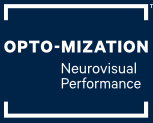VISUAL INTEGRATION
Visual integration is what happens when several visual skills work together. If you looked at a new word and then matched it with an image in your mind to help better recall what the word means, this would be an example of visual-visual integration.
So, for example, if you looked at the word “poodle” and you saw a picture of that type of dog in your mind, you would be integrating visual input with visualization.
Visual-Motor Integration
Visual-Motor Integration (VMI) is the ability to integrate visual input with motor output – commonly referred to as ‘eye-hand coordination’. This is how we plan, execute and monitor motor tasks, such as threading a needle, tying shoe laces, catching or hitting a ball. It is also essential in academic performance.
In the example below, we can look at how you are coordinating your vision with how you move your pencil. Basically, are you visually guiding your pencil to accurately represent what you see.
Children with learning disabilities tend to have VMI deficiencies. In one study, out of 51 elementary students with learning disabilities, 85% of them were identified as being learning disabled because of VMI.
SIGNS AND SYMPTOMS INCLUDE:
- Sloppy writing or drawing skills
- Can’t stay on or in the lines
- Erases excessively
- Poor organization
- Not recognizing mistakes
- Close working distance
- Poor posture when writing
- Excessive or inadequate pencil grip
- Trouble aligning numbers in columns for math problems
- Testing poorly even if they know the subject

Visual-Auditory Integration
Visual-auditory integration links information seen with information heard. Skills such as seeing a word and saying it aloud, or hearing a word and writing it down, are examples of visual-auditory integration.
Research shows that deficiencies in the auditory system can affect the visual skills key to processing peripheral space and motion. Conversely, any improvement in visual-auditory integration has a positive effect on many areas of visual and auditory function. Issues can include:
- Attention
- Discrimination
- Memory
- Closure
- Figure-ground
- Intersensory (example: auditory-verbal)
Examples include poor spelling even with rigorous studying, challenges matching sounds to letters and sounding out, and slow reading speed. While reading, a child with visual-auditory problems may subvocalize (move their mouth).
Visual Perception
Visual perceptual processing, or visual information processing, is the set of skills we use to gather visual information from the environment and integrate them with our other senses so that we can derive understanding and meaning from what we are experiencing. This process allows the development of schemes to derive meaning from what we see.
Visual perceptual processing can be broken into three components – visual spatial skills, visual analysis skills and visual integration skills.
Visual Spatial Skills
These are the skills we use to understand the directional concepts that organize our visual space. This is how we visually project our body coordinates out into the world.
For example: When you say, “It’s to the left,” the “to the left” has no meaning unless it has a point of reference. So you are actually saying to the left of where YOU are. If you don’t know where your body is, it is hard to know where things are in relation to you. Visual spatial skills require observing an object, then accurately reporting its relationship in space relative to your own self.
SYMPTOMS OF VISUAL-SPATIAL DYSFUNCTION INCLUDE:
- Lack of coordination and balance (clumsy)
- Difficulty learning left and right
- Reverses letters or numbers when writing or copying
- Difficulty with activities involving rhythm
- Not good at sports
- Does not cross the midline when doing tasks (switches objects from hand to hand)
- Does not use non dominant hand for support when writing or copying
- Rotates body when writing or copying (again to not cross the midline)

Laterality
Laterality is an internal awareness that we have two body sides and knowing they are different. It requires balance, vestibular function and an awareness of a body midline (an invisible line that divides your body in half).
During a study at the Southern California College of Optometry, 73.8% of children already determined to have a learning disability failed tests used to assess laterality and directionality.
BEHAVIOURS OBSERVED INCLUDED:
- Non-dominant hand not used for support
- Switching hands (not crossing the midline of the body with their hands)
- Motor overflow
- Body rotation (again so as not to cross over the midline)
Directionality
Bilateral Integration
Visual Analysis Skills
Visual analysis, or visual discrimination, is the ability to take in visual information remember it and apply it later. It is used to identify, sort, organize, store and recall visually presented information.
Children with poor visual analysis skills often have trouble learning their letters and recognizing words or simple forms even when presented repeatedly. (They may correctly read the word “house” in one sentence and incorrectly read “horse” two lines later.) These children tend to mistake words with similar endings or beginnings, generalize when grouping objects. They also have a hard time understanding size and magnitude. (A cup of water in a tall glass and a cup of water in a shallow bowl are not seen as equal amounts.)
SIGNS AND SYMPTOMS INCLUDE:
- Trouble learning the alphabet
- Trouble recognizing words
- Mistakes words with similar beginnings
- Overgeneralizes – confuses minor likenesses and differences
- Does not recognize the same word if repeated on a page
- Trouble with remembering and writing letters and numbers
- Distractible
- Short attention span
- Problems concentrating
- Traces or touches figures
- Difficulty with understanding instructions
- Hyper or hypo active
Automaticity
Once these skills are developed, it is important for them to become automatic so they take up less brain power to use. Just like learning to drive a car with manual transmission – at first, it takes a lot of brain power to get your feet to move the right way and for you to time it with what your hand does with the stick shift. Not only are you learning a new skill, but you still should make sure you pay attention to the road and steer accordingly. But once you get the hang of it, the ability to shift gears becomes automatic so you can devote that brain power to having a conversation with a passenger, sipping a coffee, or changing radio stations.
To have efficient visual information processing skills, you need to learn the skills well to the point where they become easy.
